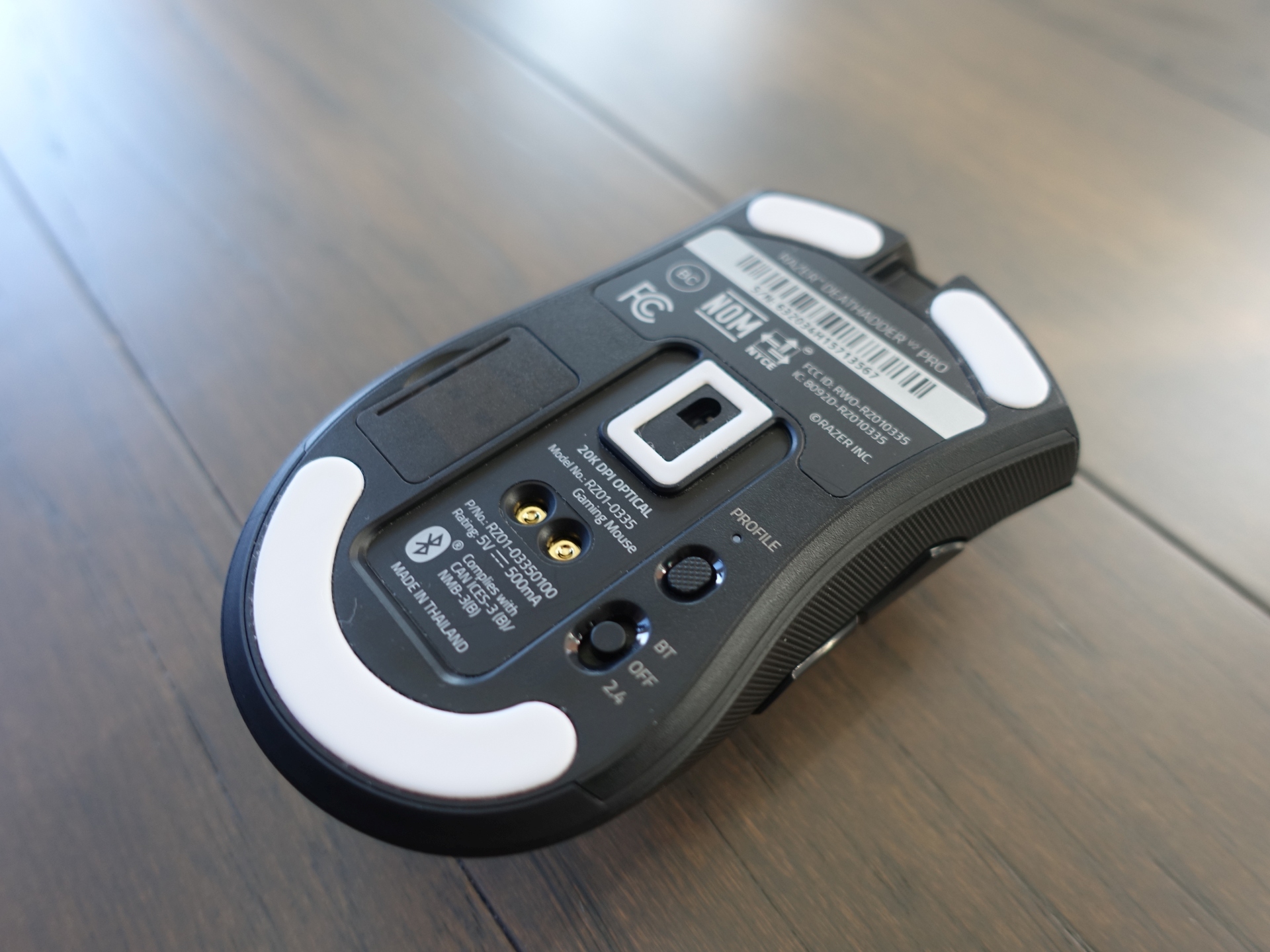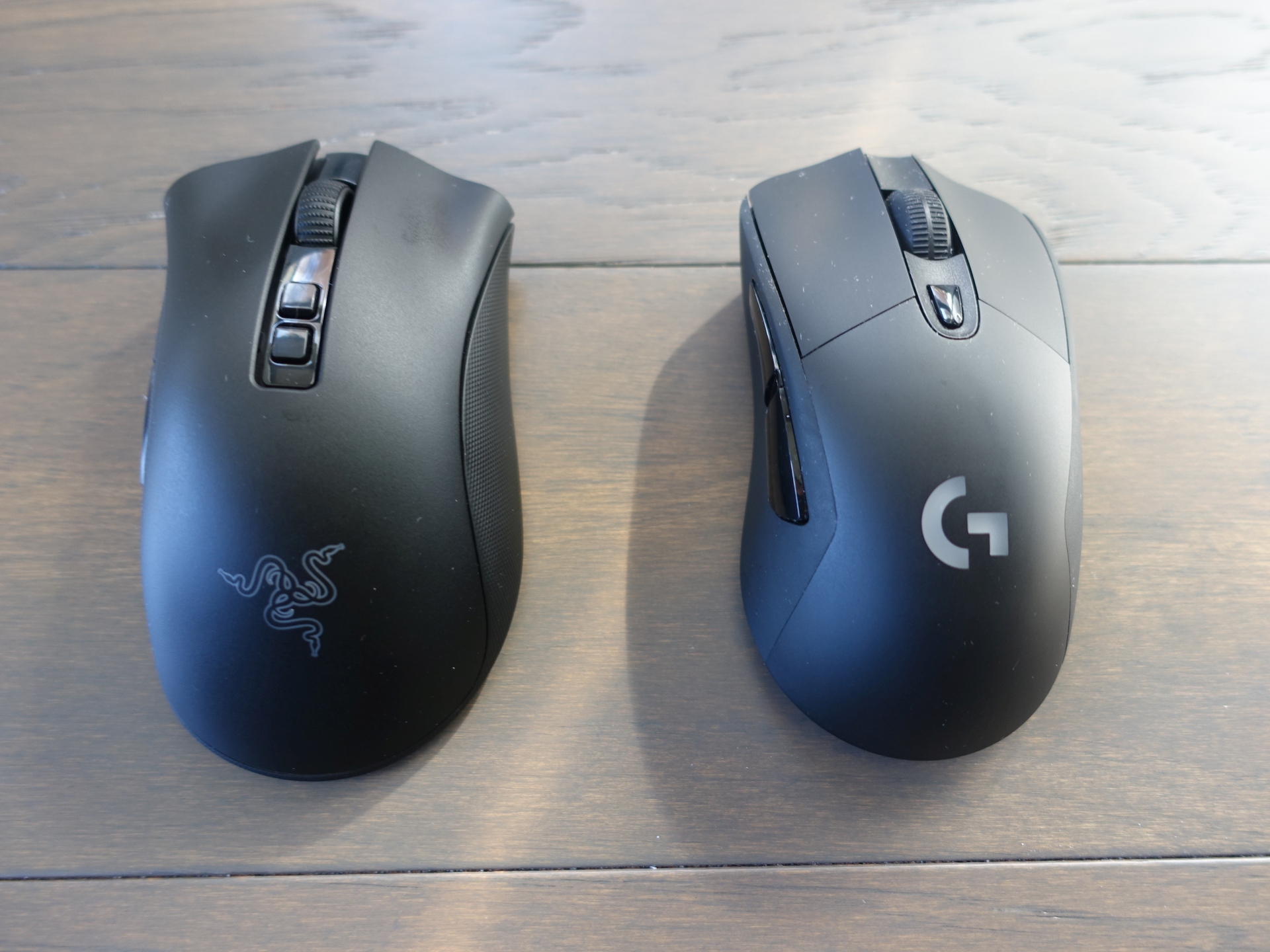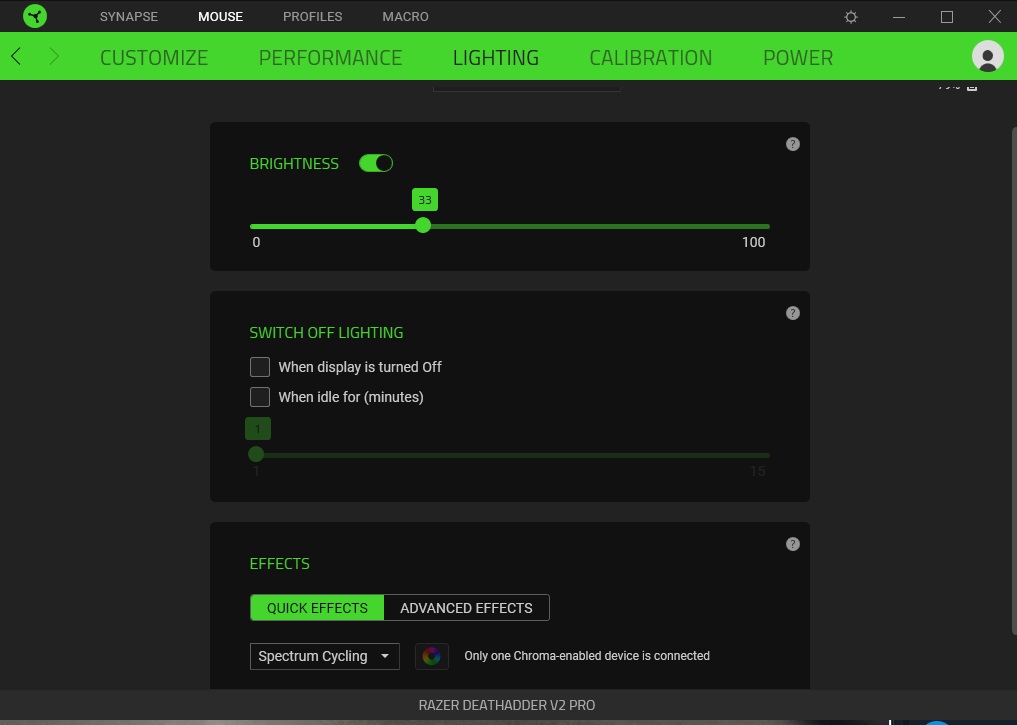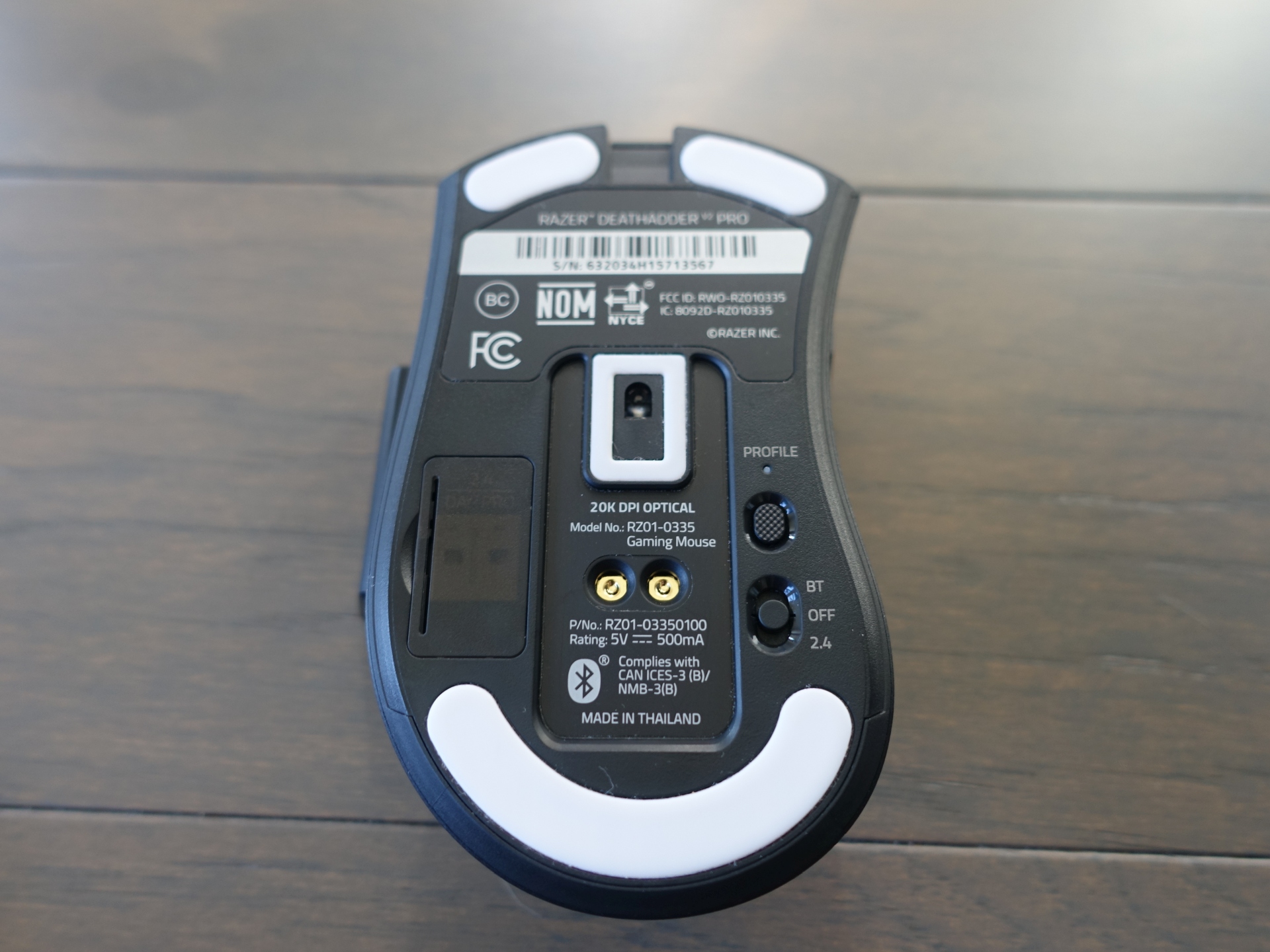Tom's Hardware Verdict
If you need a wireless gaming mouse with all of the pomp and circumstance, the Razer DeathAdder V2 Pro is one of the best options available. It offers high performance in a simple, ergonomic design that's perfect for gaming into the wee hours of the morning.
Pros
- +
Rock-solid performance
- +
Strong wired and wireless connectivity
- +
Impressive customization via Razer software
Cons
- -
The price
- -
Other mice may be better for palm grips, smaller hands
- -
Less RGB than wired version
Why you can trust Tom's Hardware
The design of gaming hardware tends to trend towards excess. We're seeing more buttons and more RGB lights housed within a shell that's all harsh plastic edges. For years, it felt like to truly justify a mouse or keyboard as a 'gaming' device, it had to look far divorced from a tool of productivity. But recently, gaming hardware manufacturers are taking a step back, realizing that what really matters in the best gaming mouse is the performance, not the look.
The Razer DeathAdder V2 Pro is a followup to the Razer DeathAdder V2, released earlier this year. That mouse crammed Razer's new Focus+ optical sensor into its best-selling shell, creating a mouse that just worked. The DeathAdder V2 Pro released today for $129.99 adds three different types of connectivity—wired, Bluetooth wireless and Razer HyperSpeed wireless via a 2.4 GHz USB Type-A dongle— in its attempt to be the best wireless mouse. If you can stomach the price, the DeathAdder V2 Pro a sublime piece of hardware.
Razer DeathAdder V2 Pro Specs
| Sensor Type | Optical |
|---|---|
| Sensor Model | Razer Focus+ |
| Sensitivity | 20,000 CPI |
| Polling Rate | 1,000 Hz |
| Programmable Buttons | 8 |
| LED Zones | 1 RGB zone |
| Connectivity | 2.4 GHz USB Type-A dongle (Razer HyperSpeed), Bluetooth, USB Type-A |
| Cable | 6 feet (1.8m) USB Type-A |
| Measurements (LxWxH) | 5.00 x 2.42 x 1.68 inches (127 x 61.7 x 42.7mm) |
| Weight | 3.10 ounces (88g) |
| Software | Razer Synapse 3 |
Design and Comfort





Razer has been reusing the DeathAdder's design since the first version back in 2006. The DeathAdder V2 Pro has largely the same ergonomic slope to it, where your hand just fits around it. It's amazingly comfortable, especially for someone with large hands like myself.
One change over the wired DeathAdder V2 is the injection-molded rubber grips on either side. On the V2, the texture was localized, whereas on the V2 Pro it covers the entirety of both side panels. This gives the mouse some texture and prevents slippage when your hands get slightly sweaty. However, it can become uncomfortable for those who like to shift their grips over long periods of use. On the left side are two additional mouse buttons, which share the same matte plastic as the shell, differentiating them from the textured surface.
Unlike the DeathAdder V2 or the Razer Naga Pro, which is also wireless, the scroll wheel on the DeathAdder V2 Pro does not have RGB. It does have the same textured pattern found on those models though, including with a notched scroll to it, but it's dark here. Instead, the DeathAdder V2 Pro's only RGB lighting comes from the familiar Razer logo.
Underneath the scroll wheel are two recessed buttons that change the CPI settings by default. Out of the box, the DeathAdder V2 Pro can be connected to your PC with the included 6-foot Razer Speedflex cable, with a braided cloth exterior that screams premium.
The underside of the DeathAdder V2 Pro has three 0.8mm-thick PTFE feet. Combined with the light weight of the mouse—a mere 3.10 ounces 88g—these feet allow it to glide over your mouse pad. Heck, at times it barely felt like it was there. And that's even with the DeathAdder V2 Pro weighing more than the wired version (2.89 ounces)
Get Tom's Hardware's best news and in-depth reviews, straight to your inbox.
Razer's DeathAdder V2 Pro also includes two gold pegs on the underside for connection to the Razer charging dock (sold separately), a profile switch button, a switch that changes the mouse from wired mode to either of the wireless options and a convenient space to store the 2.4 GHz Razer HyperSpeed dongle (USB Type-A).


In comparison to another straightforward workhorse gaming mouse, the Logitech G703, the DeathAdder V2 Pro has a softer hump. That makes the Logitech or Razer's own Naga Pro, feel slightly better if you're using a palm grip. Of course, I had to do a direct comparison to feel the difference; on its own, the DeathAdder V2 Pro feels great overall. This is a mouse that easily slots into your daily routine, whether that's productivity tasks or long hours of gaming. There's a reason that Razer hasn't really messed with the design of the DeathAdder that much: It just works.
Gaming Performance of the Razer DeathAdder V2 Pro
The DeathAdder V2 Pro offers three options for connectivity, and you can swap between them via the switch on the bottom. With the HyperSpeed connection, I had no issues with the mouse's tracking, and that continued even when I moved it even further away from my PC. Walking into another room in my apartment, the connection became a little spotty, but for those gaming in the living room, the DeathAdder V2 Pro will keep you covered.
Like the wired version of this mouse, the DeathAdder V2 Pro uses the Razer Focus+ optical sensor. Between the two sensitivity buttons and the Razer Synapses software, you can change the sensitivity of the mouse anywhere from 100-20,000 CPI with five different adjustable steps. The Razer sensor has a 99.6% resolution accuracy at 650 IPS (inches per second) and can handle up to 50G acceleration. The company points to other features, like Smart Tracking and Motion Sync, to ensure smooth motion.
Razer's optical switches under the left and right mouse buttons are rated as durable up to 70 million clicks. I had no issues with activation or double clicking; my clicks were always responsive, even when I was clicking like a mad man in Final Fantasy XIV. However, we've found that they lack the same tactile feel as gaming mice that opt for traditional (and quality) mechanical switches,.
The side buttons require a little more force to activate, meaning you're unlikely to accidentally press them. The matte plastic finish gives them great differentiation over the textured side panel, so you can always feel where they are under your thumb and the divot between the two buttons is big enough that you always know which one you're pressing.
Playing Mafia: Definitive Edition, I settled on 1,600 CPI and found it easy to drop gangsters with well-placed headshots. The same was true for nailing pinpoint arrows while hunting in Horizon Zero Dawn, where I changed sensitivity on the fly, adjusting upwards for movement but using lower levels for aiming. High CPI settings were helpful during hard strategy sessions in A Total War Saga: Troy, my current go-to strategy title. Sliding across the battlefield was smooth and precise, with nary a mis-click that I could attribute to the mouse.
Battery Life
Razer touts up to 120 hours battery life without RGB lighting using the Bluetooth connection. When using the HyperSpeed dongle connection, the battery life figure drops to an estimated 70 hours. Using the mouse primarily in the HyperSpeed wireless mode with RGB lighting on, I found the mouse lost around 1-2% of its total charge per hour. It ended up lasting 62 hours before needing a charge. That's below Razer's estimated battery life, but still pretty good for a wireless mouse. Note that at any time, you can hook up the included cable to charge while playing.
Software for Razer DeathAdder V2 Pro



The current version of Razer's Synapse software is an immensely-customizable software kit, once you've signed up, logged in and downloaded all the modules needed.
Every button on the DeathAdder V2 Pro can be re-assigned to a different function. If you want Mouse Button 5 to be a macro or have the scroll wheel click open Spotify, you can. You can even reassign the profile switch buttons, which is odd, since it's on the bottom and not really accessible during play. You can also set up a HyperShift button, which changes the functions of every button when you hold a previously assigned key.
The other tabs under the mouse module of the Razer Synapse also open up the DeathAdder V2 Pro to further customization. You can set all the CPI sensitivity stages, up to a total of five, or change the polling rate, up to 1,000 Hz.
The brightness and basic effects of the RGB are also tweakable here. The problem (if you want to call it that) is that the only RGB lighting on the DeathAdder V2 Pro is in the Razer logo, which is under your palm, making it kind of a useless thing to tweak. If you want to rise above the basic cycling options though, you need to download the Chroma Studio module.
The DeathAdder V2 Pro allows players to save up to five customized profiles to the mouse's onboard memory, which you can switch at any time by pressing the profile button on the bottom. Profiles are linkable to different apps or games as well, so that the mouse will change automatically upon switching over to an app. The automatic switch takes a hot second, but it works rather well once you have it set up. You can actually make unlimited profiles in the Synapse software, and then move your chosen few over to the mouse's onboard memory. Profiles can also be synced over the cloud once you've signed in with your Razer ID.
Bottom Line
The Razer DeathAdder V2 Pro is not for the players that want mice with 20 customizable buttons, adjustable weights and garish RGB across the entire mouse. It's for those that want great performance in a basic, comfortable mouse body. The DeathAdder V2 Pro looks like a mouse you could find in an office, outside of the glowing Razer logo.
What gives me pause is price -- it's nearly twice the cost of the wired version. The V2 Pro comes in at $129.99, whereas the V2 is just $69.99. With the Speedflex cable attached, there's not a ton of drag on the tethered mouse. The ultimate question is: How much does wireless matter to you? Is the $60 premium worth it? For some, it certainly will be.
The competition is right there as well. The Logitech G703 comes in with a straightforward design and wireless support, including wireless charging if you buy the right mouse pad separately. It has a $99.99 MSRP but was on sale for $85 as of this writing. If you're willing to walk away from top-tier performance, you can also look at the Corsair Harpoon RGB Wireless for a mere $49.99. I really enjoy the ethereal comfort of the Razer DeathAdder V2 Pro, but I'm unsure if the price point is in the right place.
That said, the V2 Pro is a great mouse and a great option to fill out Razer's suite of wireless gaming hardware. as of writing. If you're willing to walk away from top-tier performance, you can also look at the Corsair Harpoon RGB Wireless for a mere

